Peter Lamb Angele Lautier Marylyn Molisso Laurence Noga Michael Stubbs Ken Turner Mark Wallinger
Ghosts In The Machine
6 Oct – 18 Nov
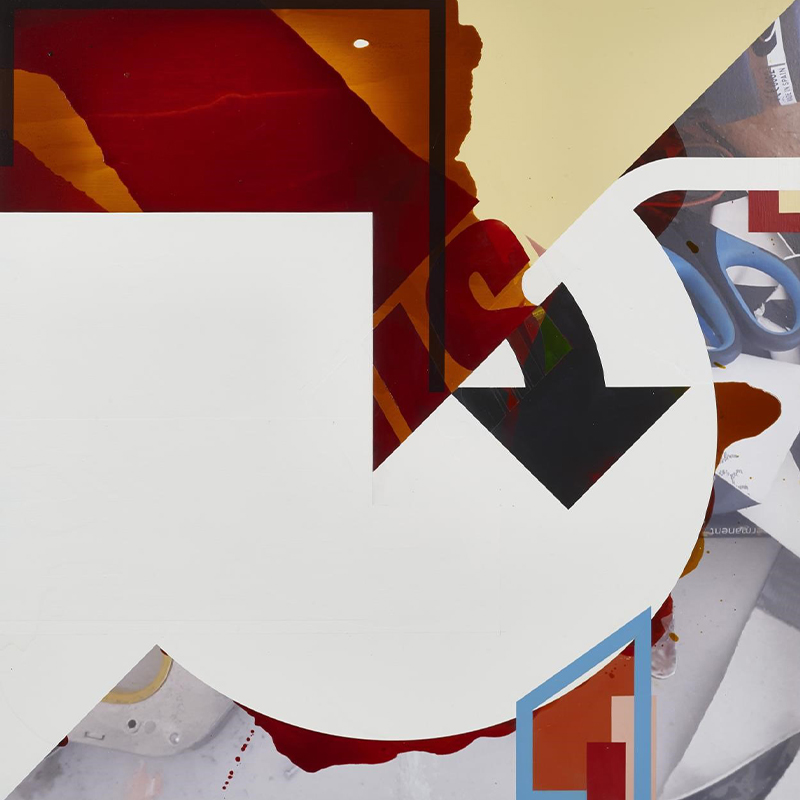
Curated by Michael Stubbs and Ken Turner
What constitutes contemporary abstraction? How do diverse contemporary interpretations affect abstraction? What is abstractions relationship now within the context of its vaunted history?
‘Ghosts in the Machine’ reflects the myriad ways these selected artists are pushing at and exploring the boundaries between old and new media, between our historically rooted modernist, medium-based understanding of painting practice and the contemporary critical discourse that attempts to extend or break it down.
If, as art historian Isabel Graw says “…. we conceive painting not as a medium but as a production of signs…” then we see the subjective experience of painting now as complex webs of visual structures, historical references and linguistic turns. In accepting that there is no essential modernist essence of painting, painting’s agency asserts itself as a series of divisions, overlappings, slippages and collisions that foreground an unstable hybridisation of painterly languages and play of historical tropes.
The artists in this exhibition give free reign to this new level of visual and conceptual invention synonymous with the legacies of abstract art. By emphasising the physical properties of the picture surface as a constructed or deconstructed space whilst simultaneously re-imagining its possibilities, some of the artists here might use the layering of imagery or the physical rupture of the support. Others might create interruptions that cast the artist’s indexical mark or the body’s performative actions against digital representations. Either way, this show asks us to re-imagine the painting surface as a site of referentially unstable, signifying chains that are relentlessly reconfigured and reconstructed with new, exotic and assertive formulations.
Peter Lamb
Peter Lamb’s work can be read as combinations of elements of paint, photography and print media with no preference on one process over another. Rather, these influences expand and contract at intervals as Lamb is playing with the possibilities of each by fusing, jostling, and absorbing respective tendencies with traits of one medium correspondingly outputted within the practices of another. Having suggested a lack of hierarchy within the process, the outputs reflect on the broader contemporary sphere of painting as a practice caught up in a transitive state of being. In other words, something that passes from, between and into another state.’
Matthew Hearn 2017
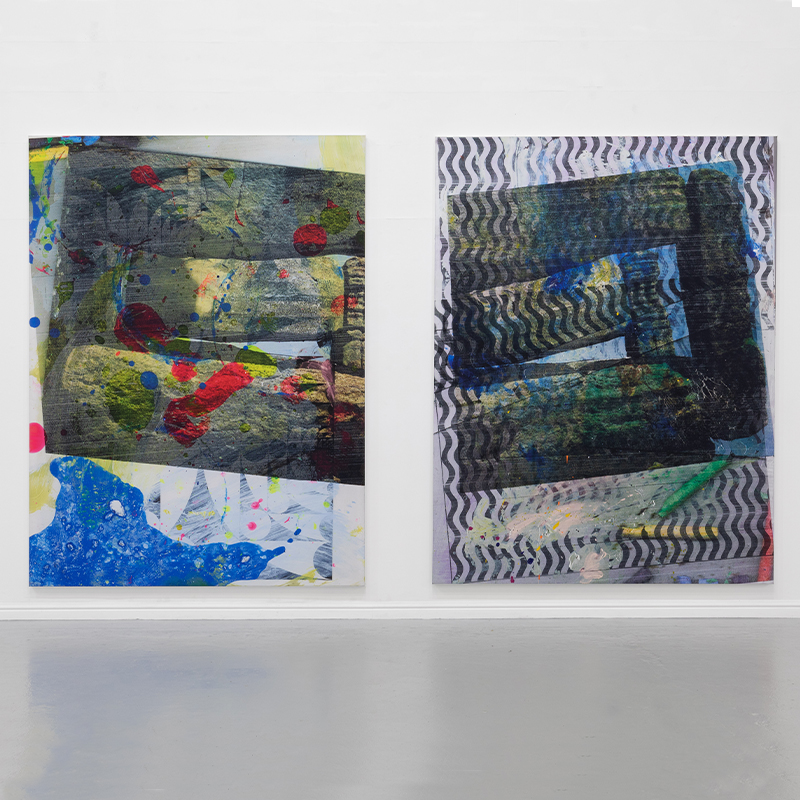
Angele Lautier
Angele’s paintings and sculptures are the product of her response to her immediate surroundings; be it a gesture in a conversation or a headline in the news. She researches them in depth and links them to an autobiographical situation in order to implement her own perspective. She then playfully upsets the concept by applying a surreal approach together with an unexpected colour palette as well as flat forms and symbols. Her interest in human interaction and behaviourism is evident in her work through the narrative and dialogue between the elements in the composition.
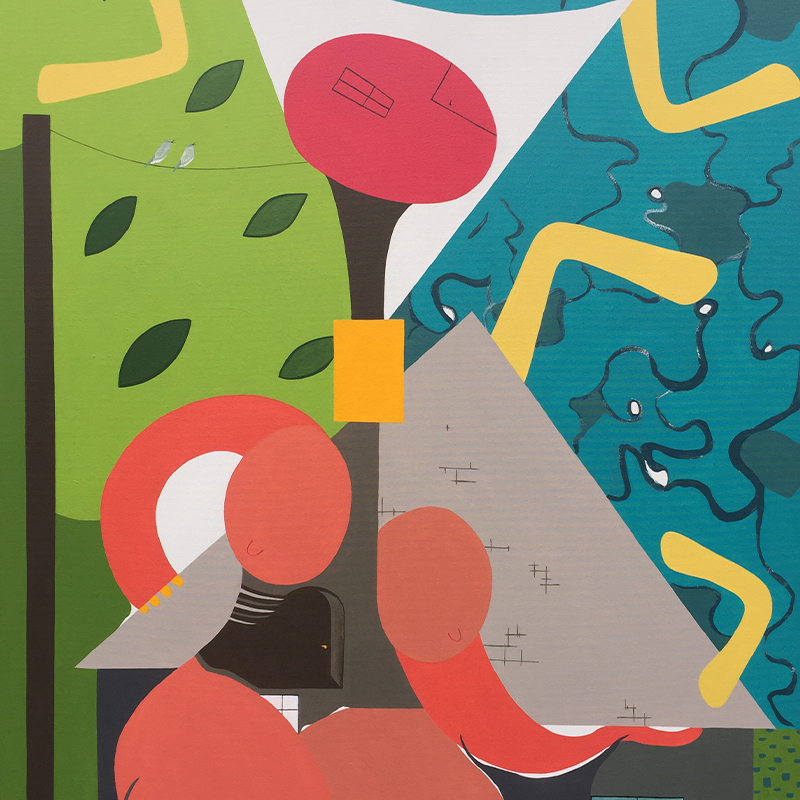
Marylyn Molisso
Molisso has been fascinated by invented histories, ruins, ancient grounds, and how these situate our sense of self in time. For Molisso, ruins can help still the anxiety created by the clashing temporal modes in which we find ourselves: the fast tempo of our own mortality, the span of human culture, and the creeping geographic time. Ruins are the evidence that we can survive our own destruction.
Molisso invents her own historical alternative, where ritualistic ruins are created to harmonize with this ever-changing cityscape (much like how barrows and burial mounds reflected the unalterable landscape of prehistoric Britain). These megaliths are inspired by the temporary monuments you can find scattered across cities: fly-tipping, debris, bedding, and plastic in all its vibrance.
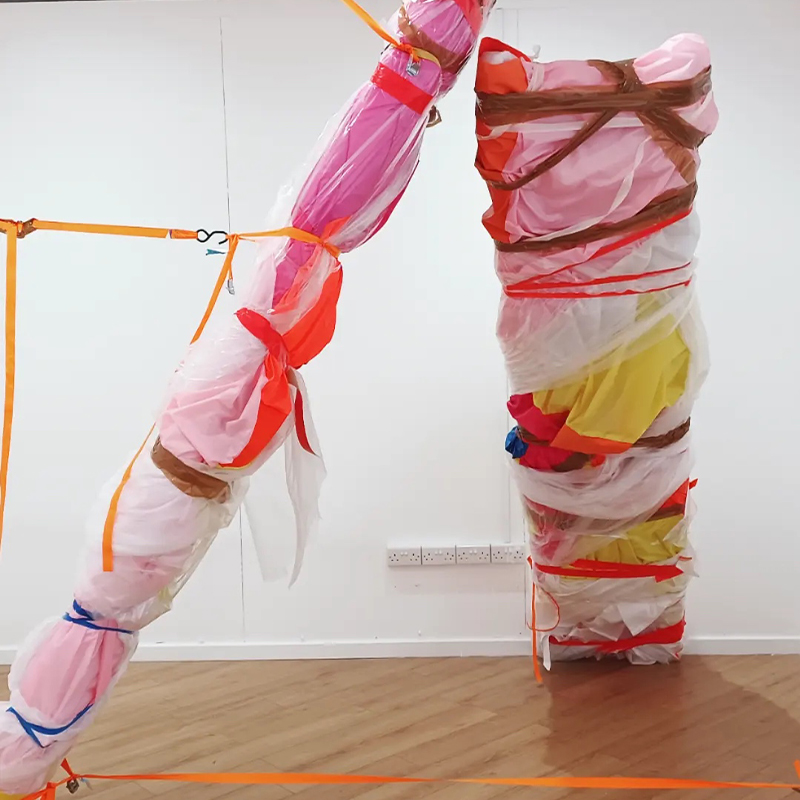
Laurence Noga
The arrangements and compositions within Noga’s recent paintings and constructions evolve through an open approach, reliant on a human response to the mysterious and forgotten.
Many elements in the work are sourced from Noga’s father’s systematic collection of objects and memorabilia – tools, packets, sheet music, washers, menus, books and photographs. Allowing this mixture of media to act as a catalyst in the approach. The work explores a personal iconography and phenomenology, and how that can be important within both memory and place. For example, the look and feel of his mother’s musty sheet music from her time as a jazz vocalist in clubs and dance bands, or the crumpled menus (with handwritten changes) from the Caprice restaurant where his father worked for many years.
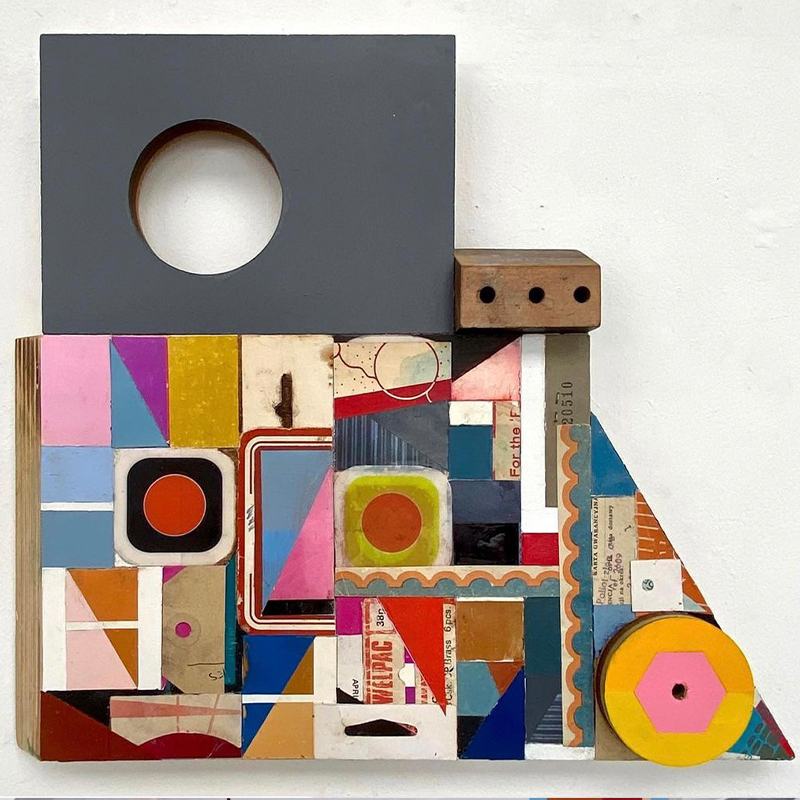
Michael Stubbs
Stubbs uses a process of visual layering within his paintings by placing fragments of one image on top of another, recognising how painting as a language is an unstable and frequently growing palimpsest of past positions. Stubbs builds his paintings through a dynamic coming together of bold slabs of household paint, and softer stains and pools of tinted floor varnish. He carefully orchestrates this painterly vocabulary to hint at, and interconnect with, both art historical precedents and the ever-present and encroaching digital and photographic vocabularies. Through their use of specific symbols, and in their crispness, Stubbs’s paintings allude, in part, to a flat, mediated world of changing layers and digital surfaces. However, these paintings also celebrate an opposing position, a much more raw and haphazard materiality. Perhaps this is most visible in their seamless incorporation of photographic images, pictures of tubs of household paint and varnish, which show the artist’s own working materials and processes.
Daniel Sturgis, ‘High on Hope’ Exhibition Catalogue, Cross Lane Projects, Kendal, UK, 2022
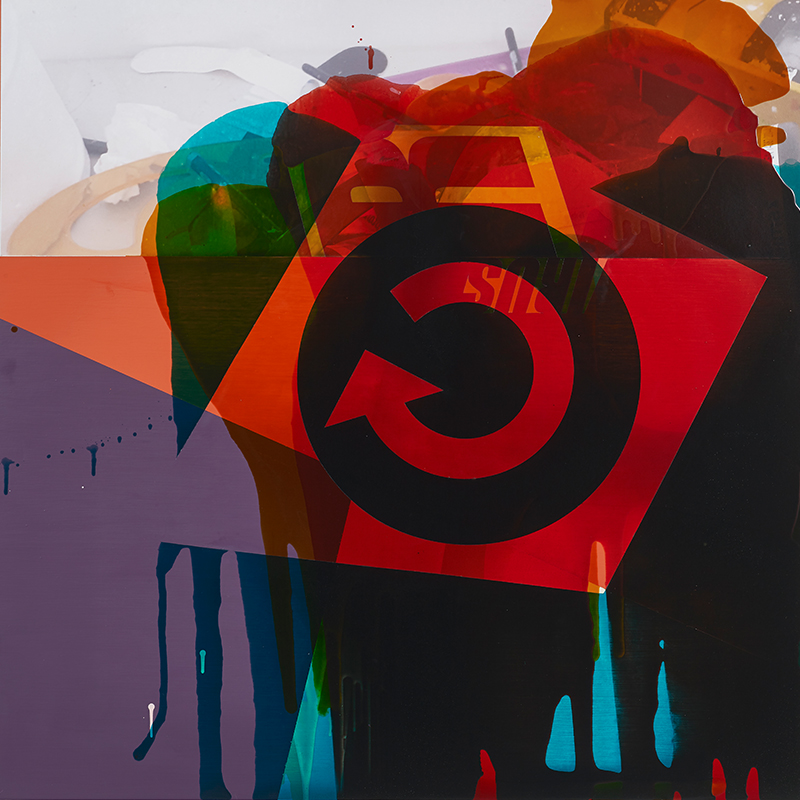
Ken Turner
Turner works in a range of media and processes, each connected through the use of intuitive mark-making. Primary colours and expressive gestural marks generate a vivid sense of an intense and energetic performance. While contingent on the materials used, human agency is conspicuous: deliberation and surrendered impulse in equal measure. Characteristic of his works is a desire to disregard the typical expectations of framing. His work appears to be escaping its own form or framing device in some way: fragments of found and discarded ephemera seep from the edges of their box frames and multiples of 3D dogs appear to be digging their way out of the gallery space.
Turner’s work presents as controlled defiance. It seeks to defy the frame in which it is presented but holds itself carefully within the familiarity of the language of art as we understand it.
Fiona Carruthers, ‘Soliloquy’ Review of Solo Exhibition, Tension Fine Art , London, UK, 2022
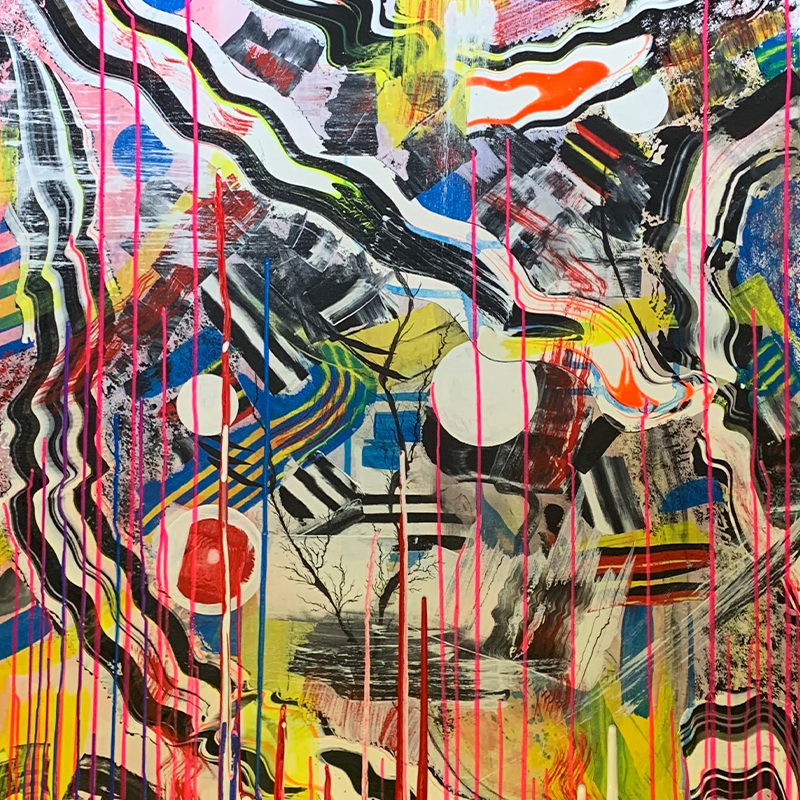
Mark Wallinger
Wallinger’s primal id Paintings (2015) spotlight, through their resemblance to Rorschach tests, perennial questions associated with all paintings – what do we read into a painting from our own subjective experiences? And how much of what the artist has made – like Freud’s psychological definition of the id – is unconscious and impulsive? These massive works, like Leonardo da Vinci’s eponymous drawing, are Vitruvian in proportion and association. Each canvas measures twice Wallinger’s height by that of his outstretched arm span and is made without brushes but with the artist’s hands and fingers. The painting’s symmetries were painted ‘blind’. Wallinger was unable to see what he was doing on the canvas when making the works as he needed to stand very close to the surface so that he could use both of his hands simultaneously to create the image through touch. As such, the id Paintings record an event, as much as an image and an idea.
Daniel Sturgis, ‘High on Hope’ Exhibition Catalogue, Cross Lane Projects, Kendal, UK, 2022
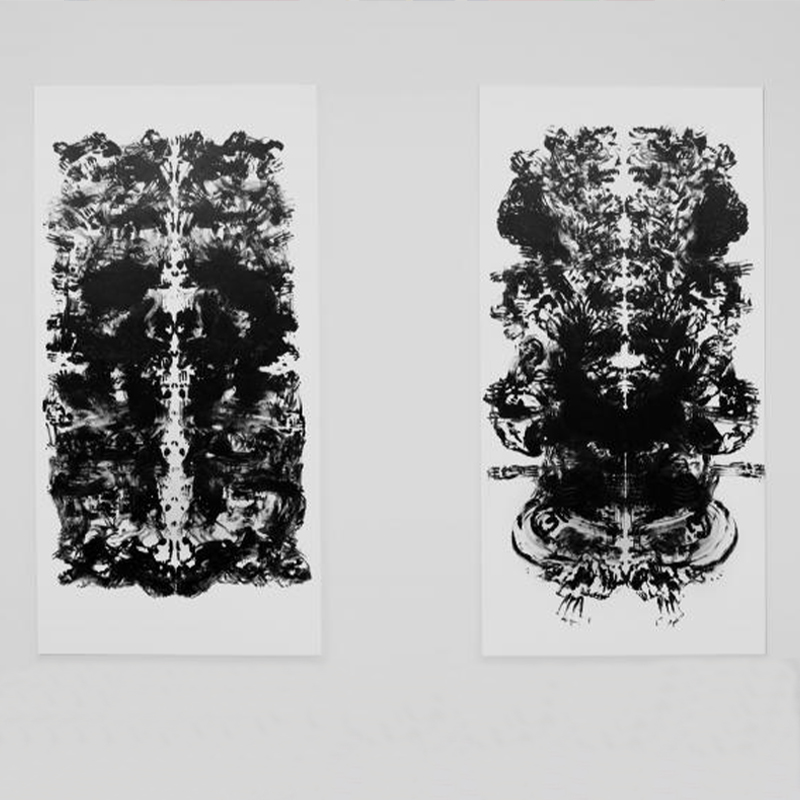
We are an artist run gallery dedicated to showcasing the work and raising the profiles of emerging and mid career local, national and international artists. We show a mixture of contemporary & experimental art that questions what art is and what art could be.
135 Maple Road
London
SE20 8LP
OPENING TIMES
Friday - Saturday
11am - 5pm
or
by appointment